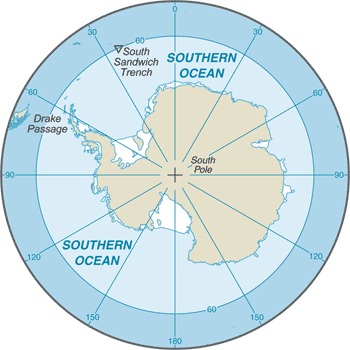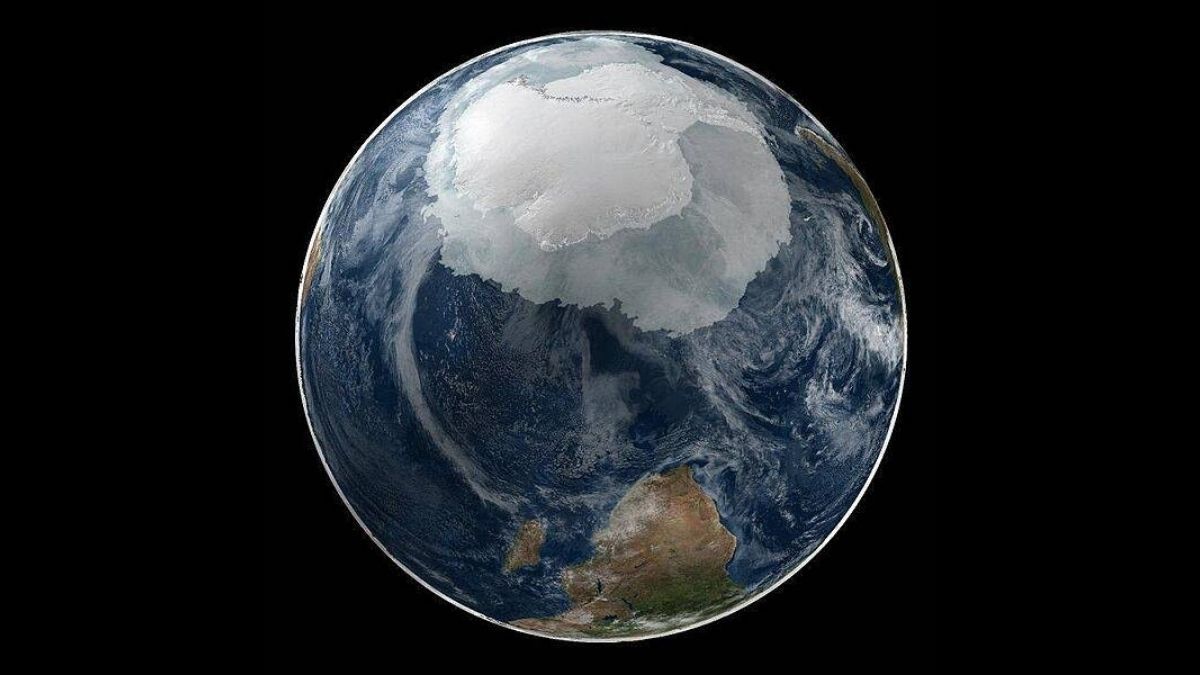After decades of debate, National Geographic announced on June 8, 2021, that it will officially recognize the Southern Ocean as the Earth’s fifth ocean. The proclamation coincided with the 2021 World Oceans Day, and as part of the initiative, the exploratory institution said that it would be updating its maps.
National Geographic Society’s map policy committee noted that it had been considering the change for years and made the decision to move forward after observing scientists and the press increasingly use the term the Southern Ocean.
One global ocean makes up 97% of saltwater on the planet, but it is divided into regions geologically influenced by the terrestrial or marine characteristics that surround it. While National Geographic and several other U.S. institutions now recognize the Southern Ocean as the fifth, the International Hydrographic Organization (IHO) — which oversees all aspects of global activities that involve the sea — officially only recognizes four: the Atlantic, Pacific, Indian, and Arctic Oceans.
Stretching slightly more than twice the size of the U.S. at more than 7.8 million square miles, the Southern Ocean directly surrounds Antarctica and stretches from the southern continent’s coastline to 60 degrees south latitude. Its icy waters are influenced by currents and temperatures held within and couch three of the four other oceans, excluding the Arctic. Boundaries for the marine region were proposed to the IHO in 2000 but it has yet to be ratified at an international level.
“We oceanographers define the Southern Ocean by its physical characteristics but government entities define oceans differently,” wrote Lynne Talley, a physical oceanographer for the Scripps Institution of Oceanography. “In 2000, the International Hydrographic Organization, which oversees the charting of the world’s oceans, defined the Southern Ocean as all the ocean regions found south of 60 degrees South, which is more or less where sea ice is found, but has yet to endorse that definition because of disagreement whether that is the best way to define it.”
But that definition does not include the Antarctic Circumpolar Current (ACC), a vital marine system that scientists at the University of Florida describe as the most important current in the Southern Ocean and the only current that flows completely around the globe. Nor does the above definition include a narrow space between South America and Antarctica known as the Drake Passage, which the ACC circulates through. ACC flows west to east around the icy continent, where waters are colder and less salty than ocean waters to the north, and transports more water than any other ocean current, according to the University of Florida.
“Both ACC and Drake Passage are crucial to the dynamics of the Southern Ocean,” added Talley. “There is also an agreement called the International Antarctic Treaty that sets aside all of the Southern Ocean south of 60 degrees South and Antarctica itself for cooperative scientific investigation.”

But some countries, including the U.S., and institutions like the U.S. Board on Geographic Names, have officially adopted the Southern, or Antarctic, as the fifth ocean, according to National Ocean Service. And though IHO has not officially agreed on a name or the boundaries of the proposed Southern Ocean, the recognition by National Geographic may change that.
“National Geographic is an important global source for the latest geographic knowledge, so without an official determination from IHO, we are updating our oceans list based on the science and conventional acceptance of the Southern Ocean,” wrote Alex Tait, a geographer for National Geographic, in a Twitter thread.
Just as its waters are vital in the transport of nutrients, the World Wildlife Foundation described the Southern Ocean as an environmentally valuable region and one of the geologically youngest oceans having formed just 30 million years ago. Average depths reach between 13,000 and 16,000 feet.
The ecological boundary follows a “sinuous line” around Antarctica called the “Antarctic Convergence,” or polar front. The ACC is described by the U.S. Department of State as a “biological and geographical boundary where cold northerly moving waters meet warmer subtropical, southerly moving waters” to create an “effective barrier” to some marine species like toothfish and krill.
